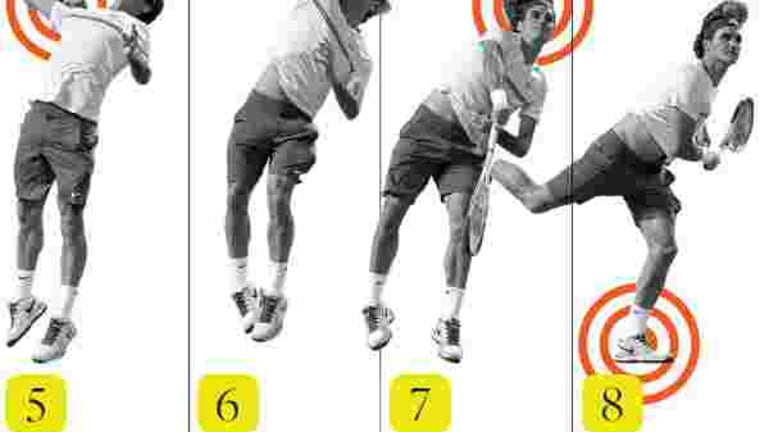The 17-time Grand Slam champion has one of the smoothest and most accurate serves in the sport.
1. Because a serve needs to be powerful, balanced and rhythmic, the first moments are critical. It’s best to establish a pattern that works well and always repeat it, whether it’s bouncing the ball a number of times or pausing for a set amount time before beginning the motion. Federer doesn’t rush his first sequence of movements. His hands start together and his racquet is drawn back and down while his left hand drops.
2. The serve has a lot of moving parts and it must be coordinated. But how it’s coordinated has changed over the years. Instead of tossing and lifting the racquet at the same speed, most players today let their racquet trail slightly behind, as Federer does here. This can prevent the racquet from stalling at its peak height (a hitch like that can ruin racquet-head speed). Federer bends his legs and shifts his energy into his quadriceps.
3. As the ball goes up, Federer’s right arm is bent and his wrist is loose. Many club players squeeze the handle of their racquets in a death grip. This creates tension in the wrist and forearm, and tension is the enemy of racquet-head speed. Federer’s toss is straight and off to the right at around 2 o’clock. His shoulder turn is such that his opponent is now looking at his back, so it’s tough to read what kind of serve he’s going to hit.
4. Here it is: the famous trophy position. But here’s what few people discuss about this moment in a serve: where the server is in relation to the ball. Federer is almost underneath it with his chest pointing up and he’s looking up at it. His racquet is in mid-loop and about to drop down. From here, he can spring upward and into the ball, transferring all of his energy into the serve.
